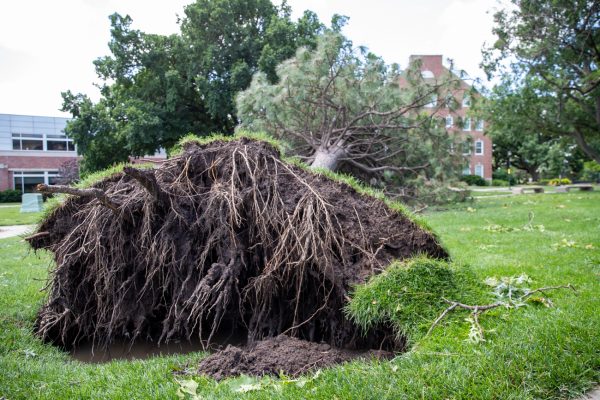University including earthquake safety in emergency planning
In the past, earthquakes in Wichita were few and far between.
After, Wichita State was hit with a 4.8 magnitude quake on Nov. 12, officials felt the need to provide safety instructions for students on campus, just in case.
Though nothing major has yet to hit Wichita, campus officials still feel students need to be cognizant of potential injurious outcomes of earthquakes, because buildings with foundations resting on unconsolidated landfill — which WSU has — are most at risk.
Toni Jackman, WSU department of geology lecturer, said she believes that although the quakes are usually small, they could still be dangerous.
“The geology department found that hydrofracking — a well stimulation technique in which rock is fractured by a hydraulically pressurized liquid made of water, sand, and chemicals — is unlikely to cause earthquakes, but it requires a large amount of water which they put down the shell in order to get the oil out,” Jackman said. “The problem is that the water has to go somewhere; and so they are putting these deep injection wells and putting the water down there and pushing it out into the spaces in the rocks. Doing is lubricating and also increasing the pressure and that’s what’s causing all of these little earthquakes here.”
When the 4.8 quake hit Wichita in November, individuals reported to local news outlets about damages to homes and buildings in the area. KWCH reported an uprooted tree with a diameter of 18 to 20 inches and a propane tank shifted off its foundation.
Damages like this caught the attention of officials who felt the need to inform the WSU community with the most efficient way to protect themselves should a quake occur.
It’s best to be outside rather than inside for multiple safety precautions, Jackman said.
“Ideally — unless they are in the geology building — we want students to be outside and away from anything that could fall,” she said. “The problem is that if students are caught in classrooms, glass will break and bookshelves will fall — all things that are injurious to students.
In the event of a large earthquake, students should be on the lookout for fires, Jackman said. Studies have proved that fires are the most common earthquake-related hazard, due to damaged gas and electrical lines.
If students feel they must leave a building after the shaking stops, then it would be advantageous for them to use the stairs instead of the elevator. Earthquakes can cause fire alarms and fire sprinklers to go off. You will not be certain whether there is a real threat of fire. As a precaution, use the stairs.
Earthquakes are rare in Wichita, but according to recent studies, they may increase with time.
“It’s better to be safe than sorry,” Jackman said. “Never think anything can’t happen twice — or multiple times over.”








